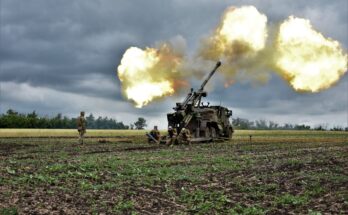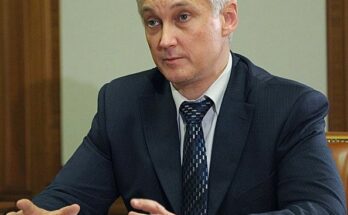More than 12 years after disbanding its last two tank battalions and mothballing and selling off the entire Royal Netherlands Army fleet of upgraded Leopard 2A6 tanks, Dutch defense officials are now toying with the idea of recreating a tank battalion.
With Russia’s invasion of Ukraine forcing defense ministries across Europe to rethink decades of cuts to their respective militaries, Dutch Defense Minister Kajsa Ollongren and State Secretary of Defense Christophe van der Maat wrote in a response to parliamentary questions on February 5 that the initiative warrants consideration.
However, due to politics and a lack of sufficient funding the idea remains – at least for now – an aspiration, rather than burgeoning reality.
The Netherlands is still recovering from its post-Cold War peace dividend that saw the once-sizable Dutch military – which in the 1980s featured six submarines, nearly 1,000 main battle tanks, and over 105,000 troops – dwindle to four early-1990s-legacy submarines, zero tanks and 36,000 troops.
During its long defense holiday that started shortly after the dissolution of the former Soviet Union in 1991, Dutch military capacity and capability steadily atrophied.
By 2009, when an economic recession stemming from the Global Financial Crisis helped create a spike in the nation’s budget deficit, government officials were left scrambling to put the country’s financial house back in order.
As with much of Europe at the time, one of the first places the Dutch government turned to for austerity savings were the armed forces.
A defense white paper, titled “Defense after the Credit Crisis,” was released by then-Defense Minister Hans Hillen on April 8, 2011, laying out how defense would be pruned to achieve broader fiscal efficiencies.
The new policy paper sparked immediate criticism from defense quarters, which argued that implementing the plan would effectively neuter the country’s military.
Those voices fell on unsympathetic ears.
Shortly thereafter a fire sale of sorts kicked off involving the entire fleet of Leopard 2A6 tanks, six of the Royal Netherlands Army’s 24 155mm PzH 2000 self-propelled howitzers, and 12 of the 17 Cougar helicopters operating with the Royal Netherlands Air Force (RNLAF). The RNLAF also retired one-third of its F-16 combat aircraft fleet and withdrew the lone DC-10 transport aircraft still in service. The Royal Netherlands Navy had to decommission two of its four Alkmaar class minehunters as well as the HNLMS Zuiderkruis, which had served as an auxiliary oiler replenishment vessel.
In addition, some 6,000 Dutch soldiers and 6,000 civilian employees were chopped from payrolls.
What was left in the wake of this wholesale downsizing was a much smaller and far less capable military.
The Dutch armed forces remained in this state over the ensuing years.
Despite Russia’s 2014 takeover of Ukraine’s Crimean Peninsula prompting NATO members to collectively call for pushing respective defense budgets upwards towards the minimum Alliance requirement of 2 percent of annual GDP, the Netherlands’ annual earmark remained at 1.17 percent or below between 2014 and 2017.
Despite government promises of more funding – albeit limited and on an elongated 15-year timeline – rebuilding the armed forces to their former state of capability remained far from an immediate priority.
Instead, entering 2022 the Netherlands defense budget had failed to push over 1.4 percent of GDP.
It took the launching of Russia’s invasion of Ukraine on February 24, 2022, to prompt a significant shift in the strategic calculus of the Dutch government.
Along with numerous other European nations, the Netherlands shortly thereafter opted to reexamine its approach to defense and security, unveiling an updated Defense White Paper on June 1, 2022.
The new strategy aims to reverse the decades-long erosion of the Dutch force structure and improve the military’s resilience and logistical and medical tooth-to-tail strength. Greater cooperation and operational cohesion with European partners – particularly Germany – are being emphasized.
Joint German-Dutch cooperation provides a starting point for the Netherlands’ goal of reviving a tank battalion.
Since 2015, the Dutch have leased 18 Leopard 2A6 tanks from Germany to help form one of five companies within the larger German-Dutch 414 Tank Battalion.
Now, however, Dutch officials want more tanks – ones acquired outright – to recreate a unique Royal Netherlands Army tank battalion.
Both Ollongren and Van der Maat noted that if additional budgeting were to be provided all military capabilities across the board would be considered for upgrading.
This naturally hints at improving the Royal Netherlands Army’s mechanized and firepower capabilities, particularly as it pertains to the lack of adept heavy and medium infantry brigades and attendant tanks. These gaps were highlighted by NATO defense ministers in their defense capability planning review on the Netherlands in 2021-22.
The catch in building out this capability, however, is not just financing.
Politics also present a hurdle to overcome.
The current government under Prime Minister Mark Rutte has remained in a caretaker role since Dutch elections were held last November. While negotiations to form a new governing cabinet remain ongoing the current caretaker government is left handling day-to-day business, with larger matters – such as large-scale military projects – remaining in abeyance.
The largest vote-getter in the parliamentary elections – the populist Freedom Party (PVV) under controversial anti-immigration leader Geert Wilders – has so far failed to attract centrist and center-right parties to his side during coalition negotiations. With the second option – a leftist Labour-Green alliance – less likely, the strongest possibility appears to be holding a second election.
Another election would further delay efforts to introduce improved capabilities to the Dutch military.
While overall funding has decidedly increased – the 2024 defense budget will rise by nearly 43 percent nominally year-on-year to reach €21.4 billion ($23 billion), or 1.95 percent of GDP – ongoing military procurement priorities – ranging from armed drones to rocket artillery systems to additional F-35s – take precedence.
Therefore, tank acquisition plans – such as one proffered by Germany last summer for a joint purchasing initiative involving the Leopard 2A8 main battle tank – remain unfunded and reliant upon the next Dutch government.
Meanwhile, approval for more funding at a time the defense budget has grown at its fastest pace in the past twenty-plus years is hardly guaranteed.
The high cost of resurrecting shorn capabilities thus continues to present a challenge for the Netherlands as it faces a long road to rebuilding its once-credible fighting force.
Dan Darling is Forecast International’s director of military and defense markets. In this role, Dan oversees a team of analysts tasked with covering everything from budgeting to weapons systems to defense electronics and military aerospace. Additionally, for over 17 years Dan has, at various times, authored the International Military Markets reports for Europe, Eurasia, the Middle East and the Asia-Pacific region.
Dan's work has been cited in Defense News, Real Clear Defense, Asian Military Review, Al Jazeera, and Financial Express, among others, and he has also contributed commentary to The Diplomat, The National Interest and World Politics Review. He has been quoted in Arabian Business, the Financial Times, Flight International, The New York Times, Bloomberg and National Defense Magazine.
In addition, Dan has made guest appearances on the online radio show Midrats and on The Media Line, as well as The Red Line Podcast, plus media appearances on France 24 and World Is One News (WION).




